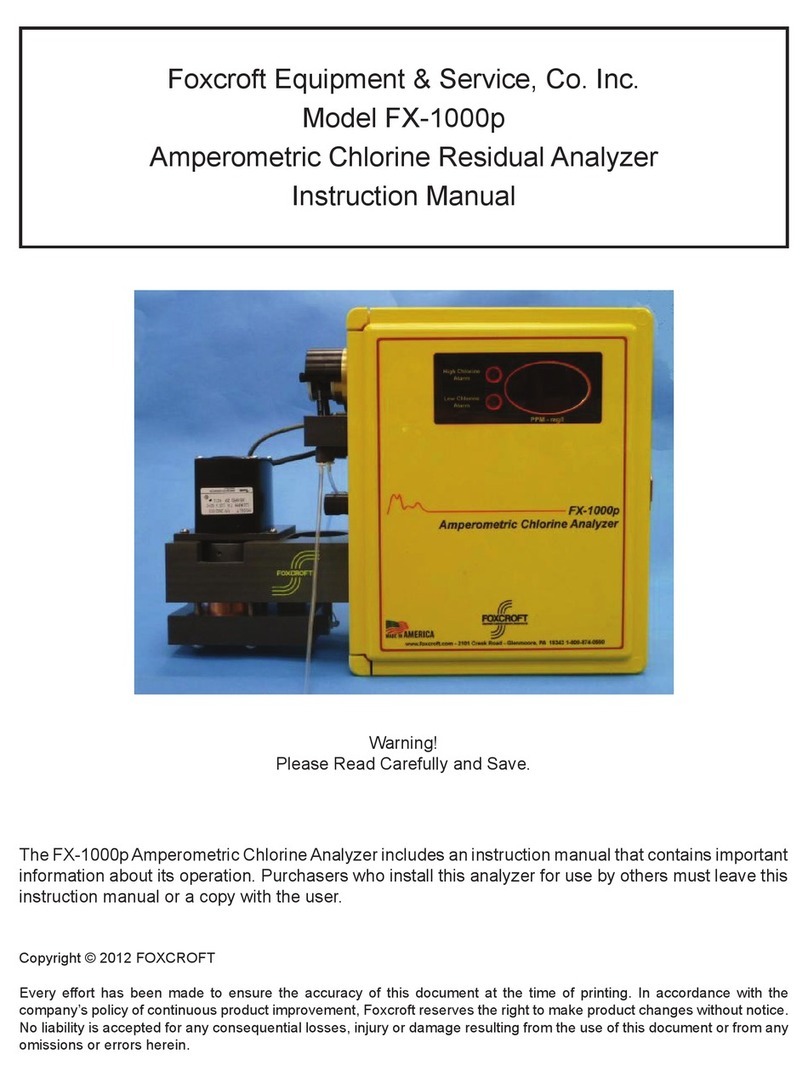
9
Section 1.6 Free Chlorine Sensor Description
2 & 3-Electrode Free Chlorine ensor Description
The 2 or 3-electrode membrane-covered, amperometric sensors are used to measure the
concentration of free chlorine in drinking and swimming pool water, industrial, process and cooling
water.
The following inorganic chlorinating agents can be measured with the sensor for free chlorine:
chlorine gas (Cl2), electrolytically generated chlorine, sodium hypochlorite (NaOCl, chlorine bleach
lye), calcium hypochlorite (Ca(OCl)2) or chlorinated lime (Ca(OCl)Cl).
The sensors are not suitable for detecting the absence of free chlorine.
The integrated electronics of the sensors provides a temperature-compensated current signal
of 4 to 20 mA.
3-Electrode Free Chlorine Sensor
The sensor for free chlorine with reduced pH dependency is a potentiostatic 3-electrode
sensor with a micro porous, hydrophilic (moisture attracting) membrane and special electrolyte.
The 3-electrode sensor can only be used in water of drinking or swimming pool water quality. olid
materials in the media clog up the membrane and prevent the sensors from working correctly. NOTE:
Iron and manganese levels above U EPA econdary Drinking Water tandards MCL will prevent the
operation of the 3-electrode chlorine sensor.
uitable chlorinating agents that can be measure include inorganic chlorine compounds such as
chlorine gas (Cl2), chlorine produced by membrane electrolysis (not suitable: chlorine electrolysis
without a membrane), sodium hypochlorite (NaOCl), calcium hypochlorite (Ca(OCl)2) and
chlorinated lime CaCl(OCl).
The measured variable is the free chlorine (including "(iso)cyanuric acid chlorine") independent of
the (iso)cyanuric acid concentration. Combined chlorine (chloramine) is not measured. The sensor is
not suitable for determining organic chlorination agents such as cyanuric acid based products.
This membrane type allows both hypochlorous acid and hypochlorite from the water to be measured
to reach the electrode chamber through the membrane. A buffered electrolyte sets a specific ratio of
HOCl and OCl
-
here.
The membrane also allows the flow of ions from the electrolyte into the water, which eventually
causes the electrolyte to be unable to function. A measured medium containing tensides (detergents,
surfactants) may lead to an accelerated exchange between the electrolyte and the medium. The
decision whether a membrane can operate in a medium containing tensides can only be made on a
case by case basis.
The working electrode is made of gold, the high-impedance reference electrode of silver/silver halide
and the current carrying counter electrode of stainless steel.
With the 3-electrode system, the selectivity is increased by the improved stability of the potential:
the system consists of the measuring or working electrode (ME), the counter electrode (CE) and a
reference electrode (RE). The potential between ME and RE is maintained at the value required for
the flow-through reaction by means of a potentiostatic switching arrangement. The RE does not
carry any current. The current flows via the CE. Again, in the case of the 3-electrode system, the
diffusion-controlled limiting current is proportional to the concentration of the analyte.
No zero adjustment is required. The electrode chamber contains a defined electrolyte, with which the
sensor does not exhibit a zero signal. Therefore, no zero adjustment using analyte-free water is
required.





























